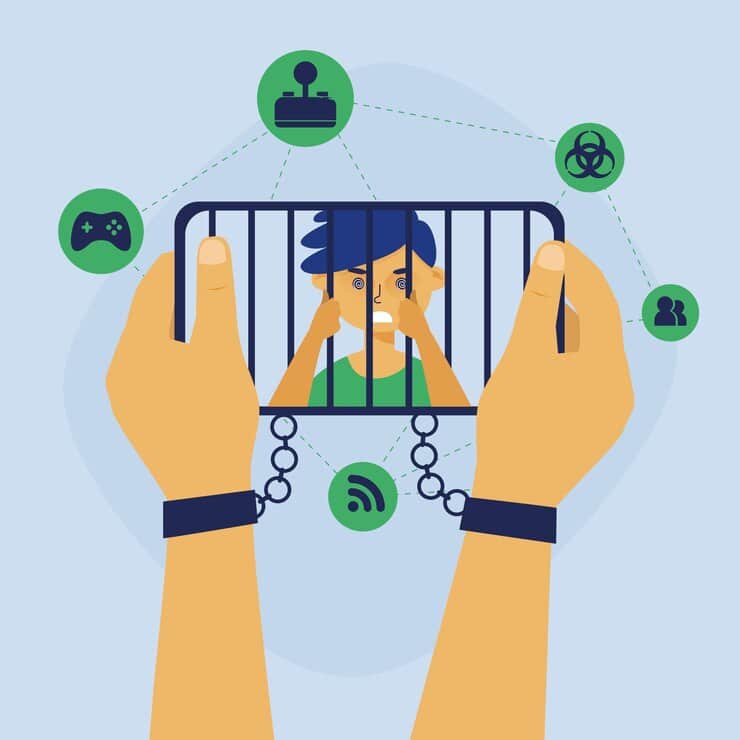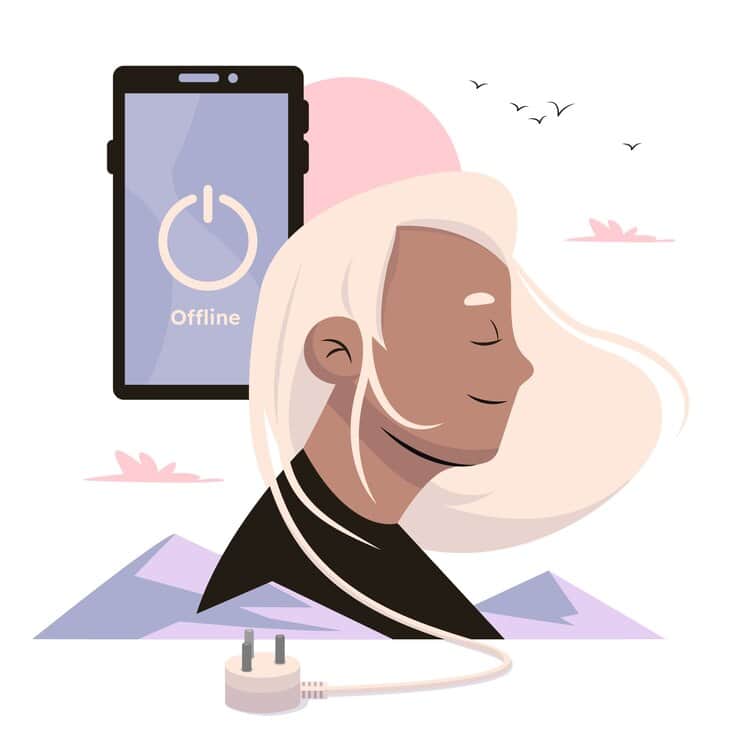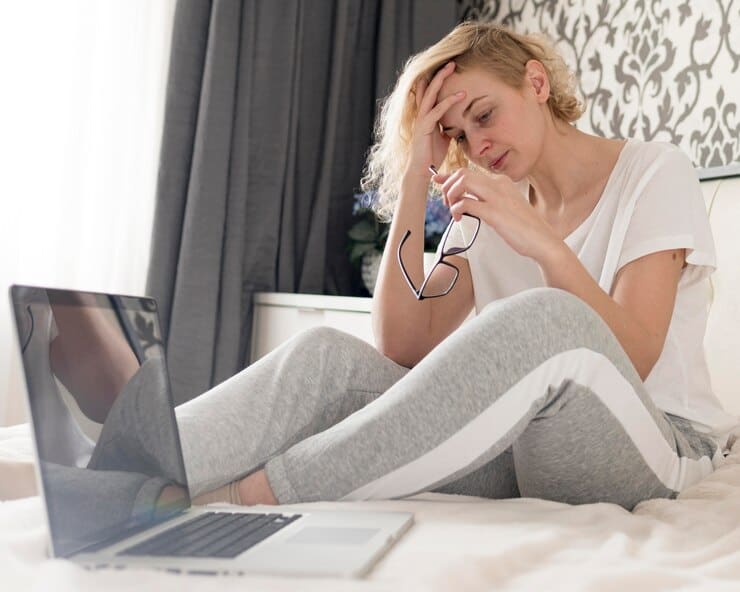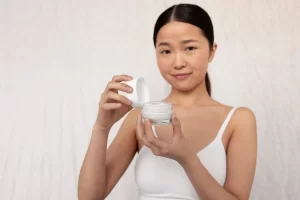
Feeling overwhelmed by digital distractions? Discover practical tips to reclaim your time and focus in this insightful video!
The Ultimate Guide to Digital Detoxification: Reclaiming Your Life in the Digital Age
In today’s hyper-connected world, our devices have become an extension of ourselves.
From smartphones to laptops, tablets to smartwatches, we’re constantly tethered to the digital realm.
While technology has undoubtedly improved our lives in countless ways, it’s also created a new set of challenges.
Enter the concept of digital detoxification – a powerful tool for restoring balance and reclaiming control over our relationship with technology.

Breaking Free from Tech Stress
Introduction: Unplugging to Reconnect
What is Digital Detox?
Digital detox refers to a period during which a person voluntarily refrains from using digital devices such as smartphones, computers, and social media platforms.
It’s a conscious effort to step back from the constant stream of notifications, emails, and digital stimuli that dominate our daily lives.
The Urgent Need for Digital Detox
As our reliance on technology grows, so does the need to address its excessive use.
Many of us find ourselves mindlessly scrolling through social media, compulsively checking emails, or binge-watching streaming services late into the night.
This constant connectivity can lead to a host of issues, from decreased productivity to strained relationships and deteriorating mental health.
Benefits and Strategies: A Sneak Peek
Embracing a digital detox can yield numerous benefits, including reduced stress, improved focus, better sleep, and more meaningful interpersonal connections.
In this comprehensive guide, we’ll explore these advantages in depth and provide practical strategies for implementing a successful digital detox in your own life.
Understanding Digital Detox: More Than Just Powering Down
The Essence of Digital Detox
- Intentional Reduction of Screen Time
Digital detox isn’t about completely eliminating technology from your life. Instead, it’s about mindfully reducing your screen time and creating healthy boundaries with your devices. This might mean setting specific hours for checking emails, limiting social media use, or designating tech-free zones in your home. - The Power of Complete Disconnection
While a partial detox can be beneficial, some people choose to go all-in with a complete digital disconnection for a set period. This could range from a day to several weeks, depending on individual needs and circumstances.
Why Consider a Digital Detox?
- The Overwhelm Epidemic
Many people report feeling overwhelmed by the constant barrage of information and stimuli from their devices. This digital overwhelm can lead to decreased productivity, difficulty concentrating, and a general sense of unease or anxiety. - Technology’s Impact on Mental Health
Excessive tech use has been linked to various mental health issues, including increased rates of anxiety, depression, and loneliness. By taking a step back from our devices, we can gain perspective and prioritize our mental well-being.

Expert Tips for a Mindful Online Life
The Dark Side of the Digital Age: Effects of Excessive Tech Use
Negative Consequences
- Mental Health Challenges
Prolonged exposure to digital media can exacerbate mental health issues such as anxiety and depression. The constant comparison fostered by social media, the pressure to be always available, and the addictive nature of many digital platforms can take a toll on our psychological well-being. - Self-Image and Self-Esteem Issues
Social media platforms, in particular, can negatively impact our self-image and self-esteem. The curated nature of these platforms often leads to unrealistic comparisons and feelings of inadequacy. - Physical Health Impacts
Excessive screen time can lead to various physical health problems, including:
- Eye strain and vision problems
- Poor posture and musculoskeletal issues
- Disrupted sleep patterns due to blue light exposure
- Increased risk of obesity from sedentary behavior
Behavioral Changes Linked to Tech Addiction
- The Comparison Trap
Social media platforms can fuel a constant cycle of comparison, leading to feelings of envy, inadequacy, and reduced life satisfaction. This behavior can become compulsive, with users constantly checking for updates and validation. - Disruption of Daily Routines and Responsibilities
Tech addiction can severely impact our ability to focus on important tasks and maintain healthy routines. From procrastination to neglecting real-world relationships, the consequences can be far-reaching.
The Transformative Power of Digital Detox: Benefits Unveiled
Psychological Benefits
- Stress Reduction
Stepping away from the constant barrage of notifications and information can significantly lower stress levels. A digital detox allows your mind to rest and reset, promoting a sense of calm and well-being. - Enhanced Focus and Productivity
Without the constant distractions of digital devices, many people report improved concentration and increased productivity. This renewed focus can lead to better performance at work or school and a greater sense of accomplishment. - Improved Self-Image and Esteem
By disconnecting from social media and other comparison-inducing platforms, individuals often experience a boost in self-esteem. This break allows for more self-reflection and appreciation of one’s own life and accomplishments.
Physical Benefits
- Relief from Digital Strain
A digital detox can provide much-needed relief from the physical strain caused by excessive device use. This includes reduced eye strain, fewer headaches, and relief from neck and back pain associated with poor posture. - Better Sleep Quality
Limiting screen time, especially before bed, can lead to improved sleep quality. The reduction in blue light exposure helps regulate your body’s natural sleep-wake cycle, promoting more restful and rejuvenating sleep.
Enhanced Relationships and Social Interactions
One of the most significant benefits of a digital detox is the improvement in real-world relationships.
By putting down our devices, we create space for more meaningful face-to-face interactions, deeper conversations, and stronger connections with friends and family.

Screen Time Addiction
Embarking on Your Digital Detox Journey: Getting Started
Assessing Personal Tech Use
- Identifying Emotional Triggers and Habits
Before beginning a digital detox, it’s crucial to understand your relationship with technology. Take some time to reflect on your tech habits:
- What prompts you to reach for your device?
- Are there specific emotions or situations that trigger excessive use?
- How do you feel after extended periods of screen time?
- Monitoring Daily Usage Patterns
Many smartphones now have built-in screen time tracking features. Use these tools to get an accurate picture of your daily device usage. Pay attention to which apps consume most of your time and at what times of day you’re most likely to engage with your devices.
Strategies for a Successful Detox
Setting Specific Goals (e.g., Device-Free Meals)
Establish clear goals for your detox. For instance, commit to device-free meals to enhance connection with those around you.
Scheduling Regular Breaks from Screens
Integrate regular breaks throughout your day. Set a timer to remind yourself to step away from screens every hour.
Creating No-Phone Zones
Designate certain areas of your home, such as the bedroom or dining room, as no-phone zones to foster healthier habits.
Turning Off Notifications
Disable non-essential notifications to reduce distractions and interruptions throughout your day.
Using Apps to Track and Limit Usage
Explore apps that can help you monitor your screen time and set limits on app usage, helping you stay accountable.
Disconnecting at Night
Establish a routine to unplug from all devices at least an hour before bedtime to promote better sleep.
Sustaining the Change: Maintaining a Healthy Relationship with Technology
Realistic Approaches to Cutting Back
- Gradual Reduction versus Complete Disconnection
For most people, a gradual approach to digital detox is more sustainable than a complete disconnection. Start with small changes and gradually increase the duration and frequency of your tech-free periods. - Personalizing Your Detox Plan
There’s no one-size-fits-all approach to digital detox. Tailor your plan to fit your lifestyle, work requirements, and personal goals. Be flexible and willing to adjust your strategy as needed.
Evaluating the Impact of the Detox
- Reflecting on Changes
After implementing your digital detox plan, take time to reflect on the changes you’ve experienced:
- How has your mood changed?
- Have you noticed improvements in your focus or productivity?
- Has there been a positive impact on your relationships?
- Making Lasting Adjustments
Use these reflections to inform long-term changes in your tech habits. Identify which aspects of the detox were most beneficial and consider incorporating them into your daily life.
When Digital Detox Isn’t Enough: Seeking Professional Help
Recognizing Severe Tech-Related Distress
While a digital detox can be beneficial for many, it may not be sufficient for those experiencing severe tech-related issues.
Signs that professional help may be needed include:
- Inability to control device use despite negative consequences
- Experiencing withdrawal symptoms when unable to access devices
- Neglecting work, school, or relationships due to tech use
The Importance of Professional Guidance
If you’re struggling with tech addiction or related mental health issues, don’t hesitate to seek help from a mental health professional.
They can provide specialized support and strategies tailored to your specific needs.
Conclusion: Embracing a Balanced Digital Life
As we navigate the increasingly digital landscape of modern life, it’s crucial to maintain a healthy relationship with technology.
Digital detoxification offers a powerful tool for reclaiming our time, attention, and well-being in the face of constant connectivity.
By understanding the impacts of excessive tech use, recognizing the benefits of digital detox, and implementing practical strategies, we can create a more balanced and fulfilling relationship with our devices.
Remember, the goal isn’t to completely eliminate technology from our lives, but to use it intentionally and in ways that enhance rather than detract from our overall well-being.
As you embark on your own digital detox journey, be patient with yourself and celebrate small victories.
Every step towards a more mindful approach to technology is a step towards a healthier, more connected life – both online and off.
Are you ready to take control of your digital life?
Start your digital detox today and discover the profound benefits of unplugging to reconnect with yourself and the world around you.
Frequently Asked Questions (FAQ)
Q: How long should a digital detox last? A: The duration of a digital detox can vary depending on individual needs and goals. It can range from a few hours (like a device-free evening) to several weeks. Start with shorter periods and gradually increase the duration as you become more comfortable.
Q: Will I miss important messages or emails during a digital detox?
A: Before starting your detox, inform key contacts about your reduced availability. You can set up an autoresponder for emails and use the “Do Not Disturb” feature on your phone to allow calls from specific contacts in case of emergencies.
Q: I use my devices for work. How can I do a digital detox?
A: Focus on reducing non-essential screen time outside of work hours. You can also implement strategies like the Pomodoro Technique (25 minutes of focused work followed by a 5-minute break) to create mini-detoxes throughout your workday.
Q: What should I do during a digital detox?
A: Engage in offline activities you enjoy, such as reading physical books, exercising, spending time in nature, practicing mindfulness, pursuing hobbies, or connecting face-to-face with friends and family.
Q: Can I still use my e-reader during a digital detox?
A: While e-readers are digital devices, they typically don’t have the same distracting features as smartphones or tablets. If reading is a key part of your relaxation routine, using an e-reader (preferably one without internet connectivity) can be acceptable during a digital detox.
Q: How do I prevent relapse after a digital detox?
A: Gradually reintroduce technology while maintaining the healthy habits you developed during your detox. Set clear boundaries for device use, keep using tech-free zones, and regularly schedule shorter detox periods to maintain balance.
Q: Is it normal to feel anxious or uncomfortable during a digital detox?
A: Yes, it’s common to experience some discomfort or anxiety, especially in the beginning. This often stems from FOMO (Fear of Missing Out) or habitual device checking. These feelings typically subside as you adjust to being less connected.
Q: Can children benefit from a digital detox?
A: Absolutely. Children can greatly benefit from reduced screen time. Encourage outdoor play, reading, and creative activities. Make it a family activity to promote healthy tech habits for everyone.
Q: How can I tell if I need a digital detox?
A: Signs that you might benefit from a digital detox include feeling anxious when away from your devices, losing track of time while online, neglecting real-world relationships or responsibilities due to device use, or experiencing physical symptoms like eye strain or disrupted sleep.
Q: Are there any risks associated with digital detox?
A: For most people, there are no significant risks to reducing digital device use. However, if you experience severe anxiety or withdrawal symptoms, it may indicate a deeper issue with technology addiction, and you should consider seeking professional help.
Related: Exercising-in-the-digital-age





